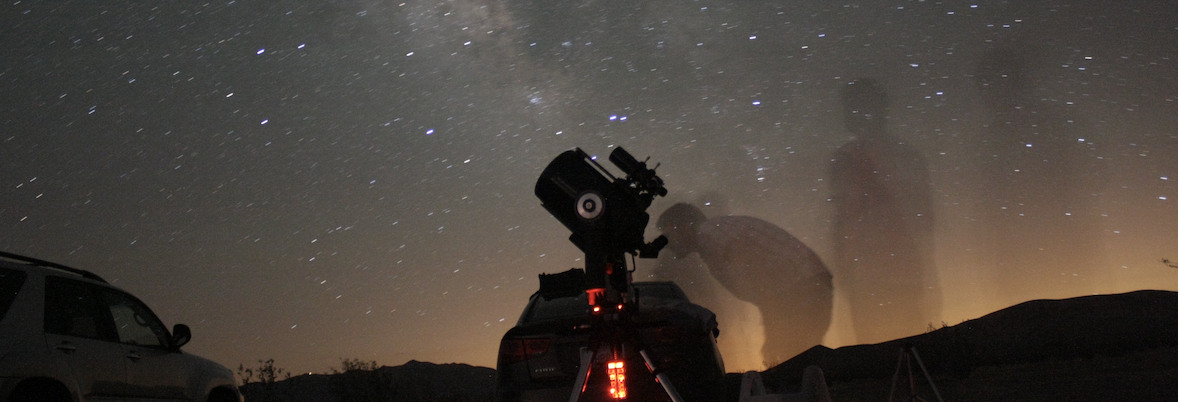Episodes

Friday Apr 01, 2016
April 2016
Friday Apr 01, 2016
Friday Apr 01, 2016
To see a video of this information, go to my YouTube Channel
April brings us some shorter nights, some being warm, some still reminiscent of winter. Also, Mercury becomes visible in the sunset,along with Jupiter, while Mars and Saturn hang out together in the morning sky. Aldebaran gets occulted by the Moon during the daytime, a weak meteor shower occurs, and the Moon, Mars, Saturn, and Antares have a great encounter.
PLANETS...well, the ones visible with your naked eye
Planets you can see around Sunset– Mercury (W), Jupiter (SE)
Planets you can see throughout the night – Jupiter (SE-->S-->W)
Planets you can see in the Morning – Jupiter (W), Mars/Saturn (SE-->S)
Mercury – Best apparition of the year. Look West after sunset and you may find Mercury in the twilight, getting higher as the month goes on until it is highest on the 18th, then creeps back down by the 27th.
Venus – Not really visible.
Mars – Look SouthEast after midnight and Mars will be the bright-ish reddish light above Antares, the brightest star in Scorpius (also red). By sunrise, it will be in the South and 30˚ above the horizon.
Jupiter – Look SouthEast after sunset and Jupiter will be the very bright light below Leo the Lion. It will move toward the South and will besetting in the W around dawn.
Saturn – Saturn will be visible after midnight in the SE, about 7˚to the left of Mars and up and to the left of Antares, the reddish brightest star in Scorpius. It will travel with Mars and be in the South around sunrise.
EVENTS...
New Moon – 7th (darkest skies)
10th – Lunar Occultation of Aldebaran – The Moon, as it moves slowly across the constellations, will cover up the brightest star in its path, Aldebaran. Times vary by location, but Washington D.C. will see the star disappear behind the invisible-during-the-daytime dark limb of the Moon at 6:43pm, and reappear on the lit side around 7:55pm. You’ll need a telescope, since this is during the day, and stars are particularly hard to see in the daytime (though not impossible).
First Quarter Moon – 13th (Visible until midnight)
17th – Close Encounter – Moon & Jupiter – Jupiter and the Moon are only about 3˚apart in the SouthEast after sunset and set in the West around 4:30am.
Full Moon – 22nd (Visible all night)
22nd – LYRID METEOR SHOWER – Not the strongest shower, at only 10-20 meteors per hour, plus the Full Moon will drown out the weaker meteors. Look North in general after 11pm and into the morning. I wouldn’t spend much time going out for this one this year, but keep an eye up and you might get lucky
24th – 25th –Close Encounter – Moon, Mars, Saturn, Antares – Look to the East around midnight, and you’ll see The Moon, Mars, Saturn, and Antares making a great quadrangle in the sky. These will rise up and move toward the South/Southeast by sunrise.
Last Quarter Moon – 29th (Visible from midnight into the morning)
CONSTELLATIONS... (see sky map link at the bottom for a Star Map for this month – or ask Mr. Webb) Look straight up and you'll see...
After Sunset (sunset is around 7:30-8:00pm) – Cancer, Leo, Lynx,Ursa Major’s legs - Extra Challenge! Find M44 in the middle of Cancer –an open cluster of stars also known as the Beehive Cluster. You may be able to see it as a small fuzzy patch with your naked eye if you have very dark skies. However with a pair of binoculars or a telescope on low power, it will look like a hive of bees in the distance, hence its nickname.
Between Sunset and Midnight – Leo, Leo Minor, Ursa Major’s legs
Midnight – Canes Venatici, Coma Berenices are closer to the Zenith(the point straight above you), but Ursa Major, Leo, and Bootes make a nice but bigger triangle around it.
EarlyMorning – Hercules, Lyra, Cygnus – These are the Summer constellations, and since they are starting to rise in the morning now, that means that summer is on its way.
GENERALCONSTELLATION FINDING TIPS:
Winterconstellations: Orion is still easy to spot as he is directly in the SW after sunset. You can use Orion to find many other winter constellations, for the last time until the fall.
Using Orion: Find Orion by looking for the three stars in a row that make up Orion’s belt in the Southwest. If you draw a line from the left star to the right star and keep going right about 20 degrees (about 2 fists at arm’s length) until you reach another very bright star, you will have reached the star Aldebaran in Taurus (the V). Follow that line a little more(about another fist) and you’ll find the Pleiades.
If you start at his belt again, but instead go the opposite way and draw a line from the right star in Orion’s belt to the left star, and keep going left about 20 degrees (2 fists again), you’ll come to the brightest star in the sky – Sirius – part of Canis Major.
Above these three constellations are Gemini and Auriga. The brightest stars in each of these constellations form a circle in the sky. Going clockwise - Aldebaron (Taurus) – Rigel (Orion – bottom right foot) – Sirius (Canis Major) – Procyon (Canis Minor) – Castor &Pollux (Gemini) – Capella (Auriga). It makes for great stargazing in the winter sky.
Use a sky map from www.skymaps.com to help you out.


No comments yet. Be the first to say something!